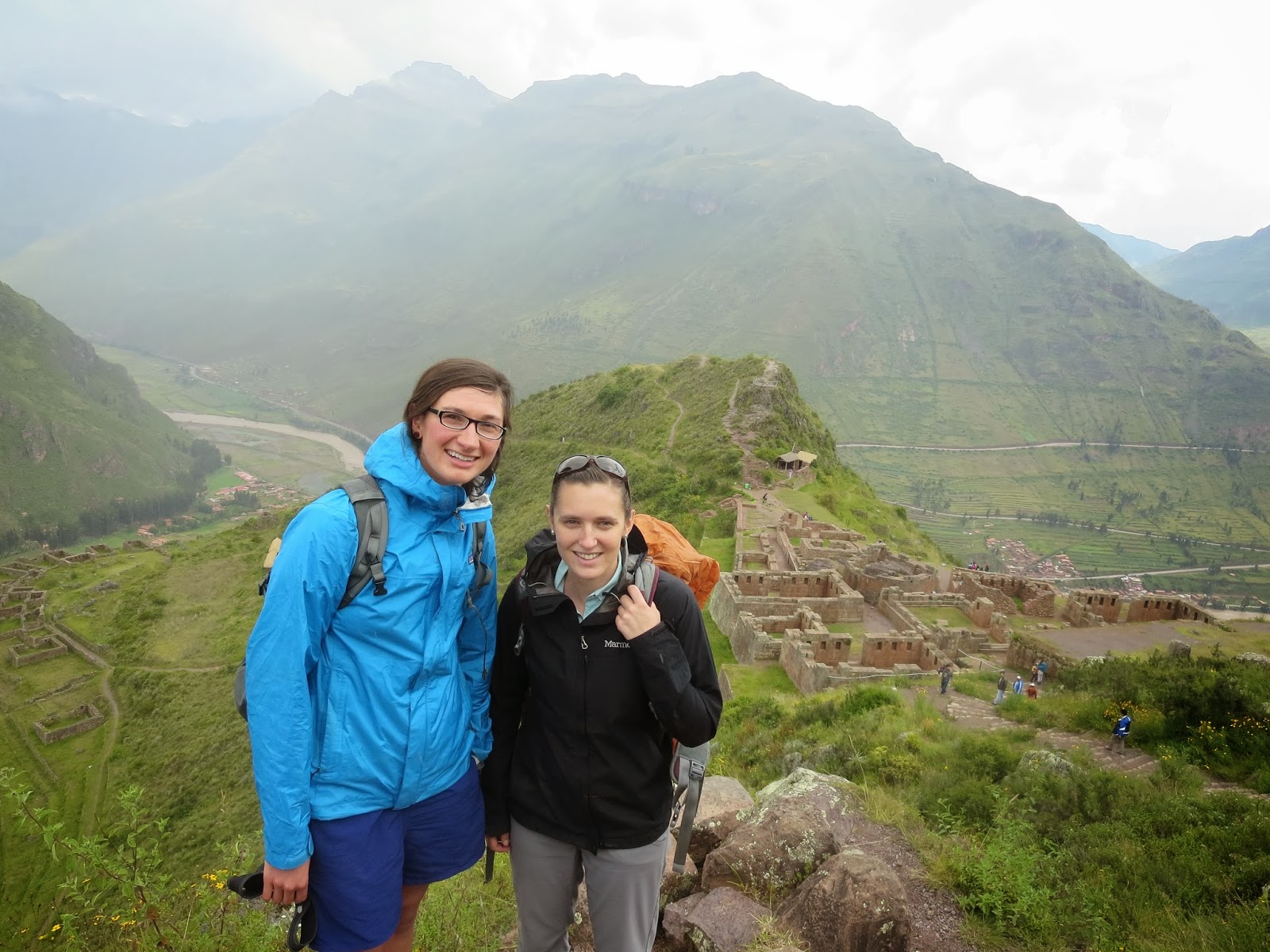My roommate and I headed south for a long weekend to visit another Fulbrighter, explore Lake Titicaca (the highest navigable lake in the world), and the high planes around Puno. We did a lot in four days so this post is a bit long, but don't worry it's mostly pictures.
Other than Cusco and Machu Picchu, Lake Titicaca has to be on of the most visited spots in Peru. Prior to our visit I had heard so much about other people's experiences, I new what to expect. Tours of Lake Titicaca are strangely uniform. Everyone who visits the lake will tell you about the Uros (floating reed islands), walking up a big hill to a beautiful textile shop on Taquile, and probably even dressing up in traditional clothing and going to a tourist dance party at night. Within that expected tourist experience is still me, visiting a place for the first and probably only time, and I was still struck by the history and beauty of the region. Knowing your experience is the same has the millions of people who have come before you can be difficult to swallow. However there is still something to learn and to experience.
These traditional communities have adapted to a modern economy through tourism. They would not exist with out it. Another day I can talk about the positives and negatives of tourism, but for this trip I tried to look beyond the routine, expected tourist visit and look at the experience through the lens of adaptive, changing communities doing what they can to preserve a certain way of life.
Without overwhelming you here are some photos from the tour!
 |
| Uros Demonstration-Expected |
 |
| Traditional Titicaca boats-Expected |
 |
| On the Uros |
 |
| Amantani one lake island |
 |
| Breath taking views on Amantani-Unexpeted |
 |
| Rock fence to section off farming plots |
 |
| Amantani and Lake Titicaca |
 |
| Amantani |
 |
| Rain on Taquile-Expected |
Spending time in Puno with a friend, Carrie and I discovered a Molecular Cafe and Bar. The scientists in us could not resist. This was certainly and unexpected experience in Puno!
 |
| Chilcanos on Nitrogen-Unexpected |
 |
| Gel Mojitos-Unexpected |
Another reason we chose this particular weekend to visit Puno was the beginning of Puno's biggest festival, Festival de la Virgen de la Candelaria. We got various versions of the origin story from different people. The unifying piece was that now the festival is a reason to dance and drink for two weeks straight. The first weekend regional groups perform traditional dances in the soccer stadium and then they continue to dance in processions through the streets for rest of the day. This is repeated the second weekend with even more dance groups from all over Peru performing more modern dance routines.
This festival both an expected and unexpected experience. We came to Puno for this festival, but didn't know quite what to we were going to get.
People from the surrounding communities traveled to the city for the day and camped out at the stadium. The dancing started at 7 in the morning and the stadium was full of families ready for the whole day with huge breakfast and lunch spreads. They were prepared for the strong alitplano sun, shockingly cold shade, good possibility of rain showers. We only went to the stadium for a while in the morning and then watched groups coming through the streets. The costumes, dancing and even music really varied by group. Overall a very impressive and I suppose unexpected experience. Here are some pictures!
 |
| Dance shows in the stadium |
 |
| Dance shows in the stadium |
 |
| Pipe players leading a dance group |
 |
| These guys had battle whips and were whipping each other all day long. |
The last day, upon suggestion of our friend, we traveled to a few surrounding towns to see more of the area. The first was to the ruins of Sillustani, a pre-Incan burial site. The tower structures are above ground tombs. As many as 20 remains, probably families, were found in each tomb, along with gold, copper, jewels and tools for the afterlife. It was great to get outside of Puno and see more of the Peruvian high plains. I am continually impressed by the beauty and diversity of the landscape in this county. The Puno alitplano offer yet another breathtaking scene.
 |
| Sillustani-Unexpected beauty |
 |
| Sillustani |
 |
| Sillustani |
 |
| Lake Umayo and Sillustani |
 |
| Sillustani |
We then went to another small town on Lake Titicaca. Juli is self named "Little Rome" for the impressive number of churches in a small town. This beauty was another unexpected surprise that we only found by suggestion. Here are more pictures.
 |
| Trucha!-Expected and delicious |
 |
| Juli- Unexpected |
 |
| Juli Church |
 |
| View of Lake Titicaca from Juli |
 |
| Lake Titicaca in Juli |
Another successful trip to a new region of Peru. I hope you enjoyed the many many photos. Back to work for another week, and more adventuring on the weekends.






































